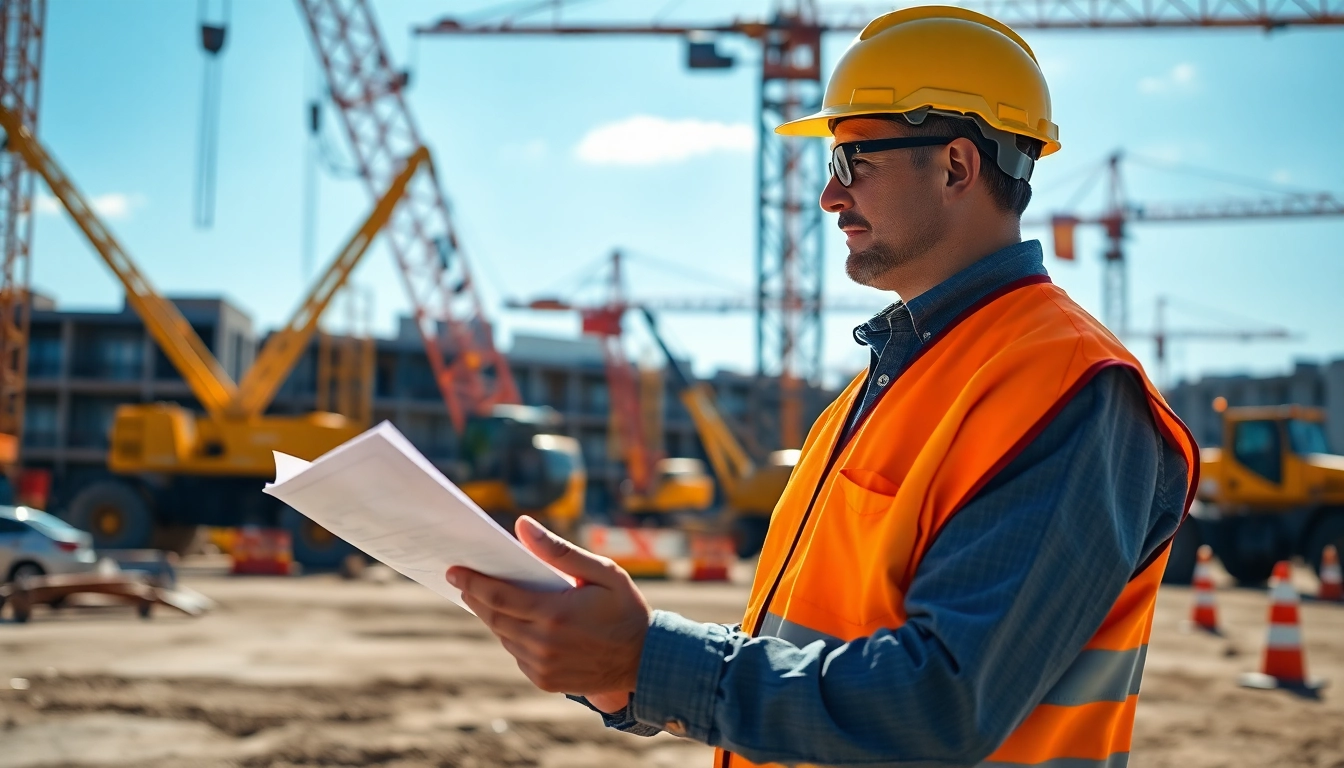Understanding the Austin Construction Landscape
The Austin construction market is thriving, fueled by a combination of economic growth, demographic shifts, and evolving industry practices. As the capital of Texas, Austin has seen significant population increases, prompting a surge in demand for residential and commercial developments. Understanding the nuances of this landscape is critical for stakeholders who want to navigate the complexities of construction in the area.
Current Trends in Austin Construction
Austin’s construction industry is currently characterized by several key trends that reflect both local needs and broader industry movements. First and foremost, the city is embracing urban density, which aims to optimize land use in response to population growth. Multifamily developments are prominent, as more people are choosing to live close to work and amenities to alleviate commuting challenges.
Additionally, sustainability is at the forefront as builders seek to incorporate green building practices, aiming for certifications like LEED (Leadership in Energy and Environmental Design) as part of new projects. Integrating renewable energy sources, reducing carbon footprints, and using sustainable materials are becoming standard practice rather than optional additions.
Technology integration is another trend shaping Austin’s construction landscape. Incorporating smart technologies not only enhances safety and efficiency but also appeals to environmentally conscious consumers. From smart home systems to energy management technologies, these innovations are becoming imperative for modern builds.
Challenges Faced by Austin Construction Companies
Despite the robust growth and favorable conditions, the construction sector in Austin is not without its challenges. A significant issue is the shortage of skilled labor. As demand surges, finding qualified workers becomes increasingly difficult, delaying projects and inflating costs.
Moreover, rising costs of materials are straining budgets and timelines. Supply chain disruptions and inflation have resulted in unpredictable price changes, making it hard for construction companies to execute accurate project estimates.
Regulatory hurdles also present challenges. Navigating local building codes and zoning laws demands time and expertise, which can lead to increased project durations and costs. Additionally, community opposition to new developments can slow down the approval process, posing another obstacle for construction companies.
Key Players in the Austin Construction Market
The Austin construction market features a diverse network of players, from developers and contractors to architects and engineers. Key stakeholders include real estate developers who identify lucrative land parcels and spearhead projects from conceptualization to completion. Contractors, both general and specialized, bring these visions to life, handling everything from excavation to finish work.
Architectural firms play a critical role in design, ensuring that new buildings meet aesthetic, functional, and regulatory expectations. Furthermore, engineers, particularly civil and structural engineers, are essential in ensuring that projects are safe and viable.
Beyond traditional roles, consultants specializing in sustainable building practices and smart technology integration are gaining importance as demand for these areas rises within high-profile projects.
Regulatory Environment Impacting Austin Construction
The regulatory landscape in Austin heavily influences the construction sector. Understanding the legal framework is vital for success in this dynamic market.
Local Building Codes and Regulations
Austin’s building codes are designed to ensure safety, sustainability, and compatibility with the environment. These codes dictate everything from structural integrity to energy efficiency standards. Compliance with local building codes is non-negotiable, and often involves the submission of detailed plans for review.
It’s advisable for construction firms to have a strong grasp of these regulations, as non-compliance can result in costly delays and fines. Regular updates are issued by city officials, emphasizing the need for ongoing education on the latest guidelines.
Environmental Considerations in Austin Construction
Environmental considerations are paramount in Austin’s construction practices. The city has made commitments to sustainability, advocating for practices that mitigate negative impacts on both the ecosystem and community. This involves managing stormwater runoff, preserving green spaces, and ensuring energy-efficient building practices.
Moreover, projects often undergo environmental assessments to identify potential impacts. An increasing number of builders are also turning to eco-friendly materials and technologies to align with the city’s sustainability goals, thereby enhancing project appeal to environmentally conscious buyers.
Permitting Process for Austin Construction Projects
The permitting process in Austin can be intricate, often requiring multiple approvals from various city departments. Each project must navigate zoning regulations, historic preservation guidelines, and environmental assessments, which cumulatively can extend timelines significantly.
To facilitate smoother processing, builders are advised to engage with local planners early in the project’s development phase. Early engagement can help identify concerns that might arise during the approval process, allowing for modifications before formal submission.
Innovative Approaches in Austin Construction
Innovative building practices are reshaping how construction is approached in Austin, offering new solutions to old problems and enhancing overall project efficiency.
Sustainable Building Practices
Sustainability is not just an option; it’s becoming standard in recent projects within the Austin construction scene. Builders are adopting practices such as using recycled materials, installing energy-efficient systems, and seeking out renewable energy sources. Innovative companies are even exploring alternative energy forms to power construction sites.
To achieve sustainability goals, many firms are pursuing certifications like LEED, which indicates a commitment to sustainable practices. These certifications can also enhance property resale value, appealing to a growing segment of eco-conscious buyers.
Smart Technology Integration in Austin Construction
Smart technology integration is transforming homes and commercial buildings, focusing on enhancing efficiency and livability. From smart thermostats that adjust heating and cooling based on occupancy to advanced security systems and energy management tools, builders are increasingly relying on these technologies to attract buyers.
Additionally, integrating Building Information Modeling (BIM) can facilitate better project visualization and management, reducing errors and streamlining communication between various stakeholders involved in construction projects.
Design Trends Influencing Austin Construction
Design trends in Austin are mirroring the vibrant cultural and artistic scene of the city. This includes an emphasis on open layouts, energy-efficient lighting, and the use of natural materials that not only blend with the environment but resonate with the local aesthetic.
Architects and designers are also increasingly focused on creating multi-functional spaces that can adapt to changing needs, particularly in residential units where versatility is key to attracting potential buyers.
Financing Strategies for Austin Construction Projects
The path to successful financing can be complex, but understanding your options is vital for anyone involved in construction within Austin.
Understanding Construction Financing Options
Construction financing generally comes in various forms, including construction loans, self-funding, and joint venture arrangements. Construction loans are typically short-term and specific for covering costs until the project is complete and can be transitioned into a mortgage.
Self-funding, although requiring substantial upfront capital, allows for more control over the project. Joint ventures can also present a favorable option, pooling resources and expertise with partners to enhance financial stability and reduce individual risk.
Working with Investors in Austin Construction
Investors are crucial players in funding construction in Austin, seeking projects that promise returns, whether through rental income or resale value. Engaging investors requires demonstrating a clear understanding of the project’s scope, projected timelines, and potential return on investment (ROI).
Building a compelling pitch and maintaining transparent communication throughout the process can foster trust and encourage ongoing support from investors, leading to successful project completions.
Cost Management Practices for Austin Construction
Cost management is critical for any construction project. Implementing thorough budgeting practices, conducting periodic assessments, and keeping costs aligned with projections can help prevent overruns. Techniques such as Value Engineering (VE) focus on modifying project characteristics to achieve the best value for the lowest cost, while still maintaining quality and functionality.
Furthermore, utilizing project management software can enhance financial oversight by providing real-time updates on expenditures and forecasting potential financial hurdles before they become problematic.
The Future of Austin Construction
Looking ahead, the future of construction in Austin appears poised for further innovation and growth, influenced by emerging technologies and market shifts.
Emerging Technologies in the Construction Sector
New technologies are continually reshaping construction practices. Robotics and automation are set to streamline processes while enhancing safety on job sites. For example, drones are being employed for site surveys and inspections, offering real-time data that improves accuracy and efficiency.
3D printing is also emerging as a game changer, with the potential to significantly reduce labor costs and timeframes for building various structures. Adoption of these technologies can offer a competitive edge in a rapidly evolving market.
Potential Market Trends Affecting Austin Construction
As Austin’s urban landscape continues to evolve, trends such as the shift towards affordable housing will likely gain traction. The rising cost of living is pushing developers to consider more cost-efficient construction methods and designs to meet demand.
Additionally, the influence of remote work may shape commercial construction projects, leading to a reevaluation of space usage and functionality in office designs, which favors flexibility and adaptability.
Community Impact and Growth in Austin Construction
As construction continues to expand in Austin, its impact on the community must be carefully managed. Maintaining open lines of communication with residents and stakeholders regarding new developments is crucial. Addressing concerns and incorporating community feedback can lead to enhanced acceptance and support for construction projects.
Ultimately, prioritizing community needs and fostering collaboration among various stakeholders will be vital for sustainable development in Austin, ensuring that growth benefits both residents and the overall landscape.



